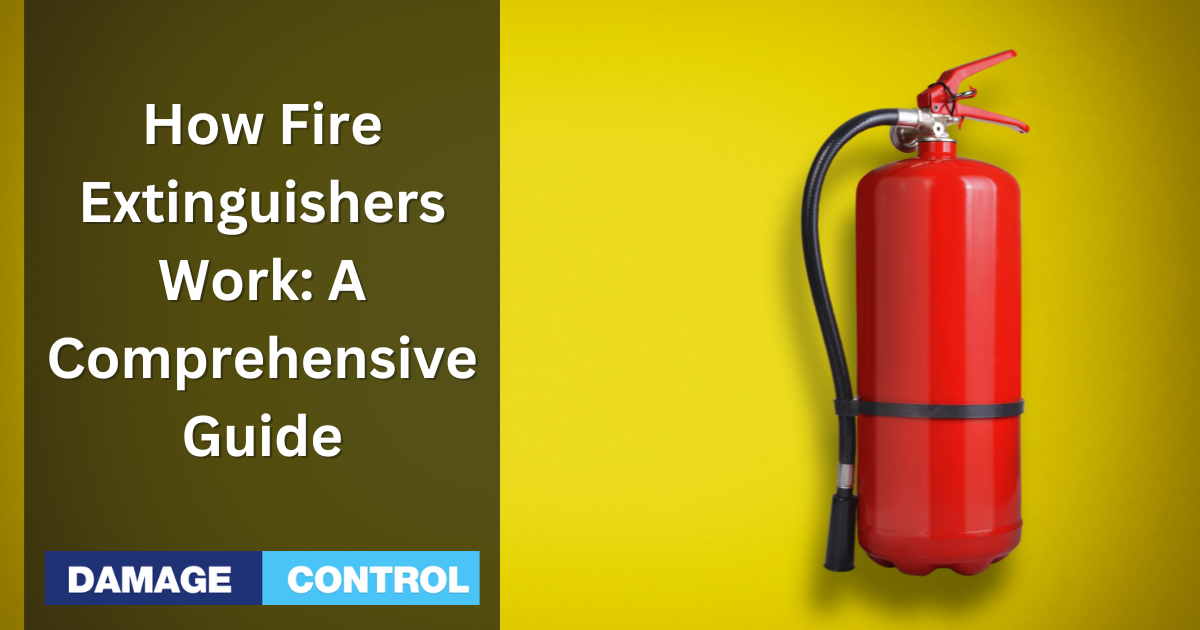Fire – the fierce element that gobbles up buildings in a heartbeat. Leaves nothing but ash and wreckage. It's undeniable – you need the right tools to douse the flames. Enter, the fire extinguisher, your champion in the battle against blazes.
So, how do these lifesavers work? They're armed with diverse agents, each with a specific type of fire in their crosshairs. Your everyday combustibles like wood or paper? Water's their kryptonite. As for electrical fires, carbon dioxide steps up. All these agents are tucked away inside a pressurized container, primed for a rapid-fire response when emergencies strike.
But here's the deal – wielding a fire extinguisher isn't a guessing game. You need the know-how. And that's exactly where this guide steps in. You'll unravel the secrets of the various extinguishers, the types of fires they tackle, and how to use them like a pro when seconds count.
Homeowners, business owners, or the everyday safety enthusiast – there's something in here for everyone. Stay tuned as we light up the world of fire extinguishers, giving you the knowledge you need to stand tall against the fiery foe.
Chemical Reaction Fire Extinguishers
Ever battled flames with chemistry? Enter the realm of chemical reaction fire extinguishers – a favorite in the firefighting arsenal. Their secret weapon? Interrupting the very chemical reaction fueling the fire.
Meet the trio making up this chemistry squad. First, the dry powder extinguishers turn fires into a smoky memory. Second, the foam extinguishers smother the flames with a blanket of foam. And lastly, carbon dioxide extinguishers rob the fire of oxygen, its very life source.
This dynamic trio showcases the power of chemistry in action, turning the tables on unruly fires. Can't wait to dive deeper? Stick around as we turn up the heat on these extinguishers!
Dry Powder Extinguishers
Dry powder extinguishers are the jack-of-all-trades in the firefighting world, mastering various fire types. Their strategy? Suffocate the fire, denying it oxygen. And that's not all – they're heat absorbers too, cooling the blaze down. Where do they shine? Think industrial landscapes, safeguarding against flammable liquids or gases.
Foam Extinguishers
Foam extinguishers rise to the occasion when flammable liquids and solids stir up trouble. Their battle plan? Spawn a foam layer over the fuel, severing its oxygen lifeline. But there's more – they're also the cool kids, chilling the fire down. Their preferred battleground? Garages, workshops, and other dens of flammable liquid storage.
Carbon Dioxide Extinguishers
Carbon dioxide extinguishers are aces at tackling electrical equipment and flammable liquid fires. Their modus operandi? They nudge oxygen out, cutting off the fuel source. These extinguishers are a common sight in offices and locales buzzing with electrical equipment.
How do Water Fire Extinguishers work?
When it comes to Class A fires, water fire extinguishers steal the show. They're experts at cooling the blaze, snuffing out fires fueled by combustible materials like wood, paper, cloth, trash, and plastics.
So, how do they roll? Once triggered, they shoot a water jet or spray from their nozzle. This jet cools the fiery elements, suffocates the flame, and messes with the fire's chemical reactions. The endgame? Fire out. Fire spread – prevented.
But remember, they're specialists for Class A fires. Class B (think flammable liquids like gasoline, oil, grease) or Class C fires (caused by electrical equipment)? Not their scene. Water extinguishers on these fires spell danger and risk fuelling the flames.
These extinguishers come in all shapes and sizes. Bigger blazes call for bigger extinguishers and vice versa. But size isn't all that matters. You need the skills to use it right. Remember the acronym PASS: Pull the pin, Aim at the fire's base, Squeeze the handle, and Sweep side-to-side. Always maintain a safe distance, and if the fire's too big, call in the professionals.
How Do Halon Fire Extinguishers Work?
Halon fire extinguishers have long been hailed as fire-fighting marvels, all thanks to their star player, Halon. This liquefied, compressed gas is a champ at halting Class A, B, and C fires dead in their tracks.
Halon's strategy? Sabotage the chemical chain reaction fueling the fire. Once unleashed, Halon clashes with the fire's fuel and oxygen, concocting a reaction that throws a wrench in the combustion process. The result? The fire's oxygen supply is cut, leaving the flames gasping for breath.
But here's the catch. Halon fire extinguishers have been shown the exit due to their environmental impact. They're packed with chlorofluorocarbons (CFCs) notorious for assaulting the earth's ozone layer. Hence, they're no longer in production, and existing units are being phased out.
If you've got a Halon fire extinguisher, keep it in check. Regular inspections are crucial. Six-year maintenance checks and hydrostatic tests every 12 years are a must. And if your Halon unit is hitting the 12-year mark.
How Do Fire Extinguishers Work?
We've delved into the world of fire extinguishers, shedding light on their modus operandi and their role in safeguarding lives and property.
What's their secret sauce? Fire extinguishers are about sabotaging the fire trifecta: heat, fuel, oxygen. Take one out of the equation, and the fire's done for. And with various types of extinguishers tailored for specific fire situations, knowing which one to wield is crucial.
We've run through the fire extinguisher lineup: water, foam, dry chemical, CO2, and halon extinguishers, each with their unique perks and drawbacks. Grasping their workings and their right moment to shine is key.
And don't forget, knowing how to handle these fire-busting tools is equally important. Remember PASS: Pull the pin, Aim at the fire's base, Squeeze the handle, Sweep side-to-side. But bear in mind, these devices are meant for small fire outbreaks. When faced with a fire beast, let the pros handle it.

